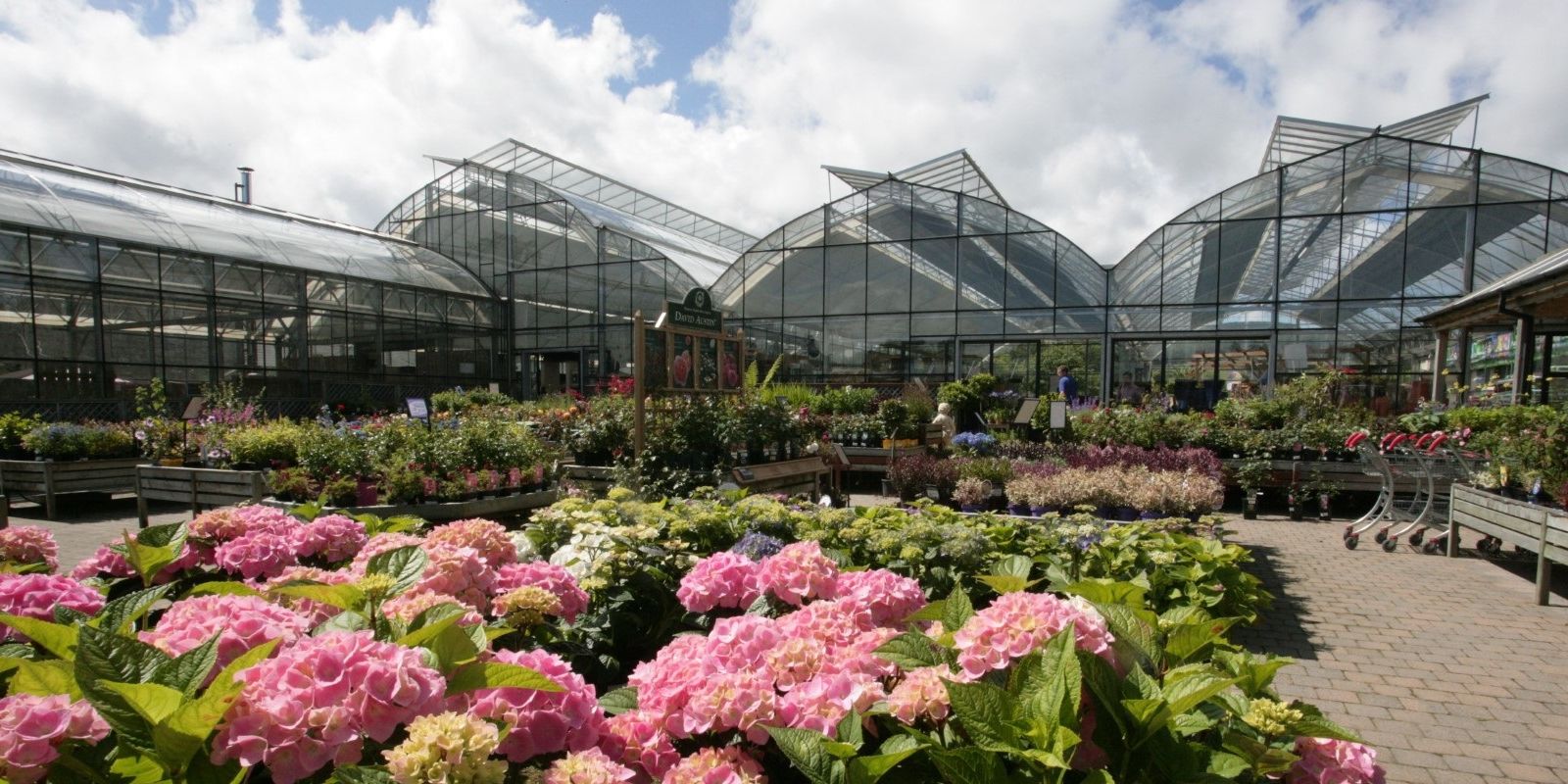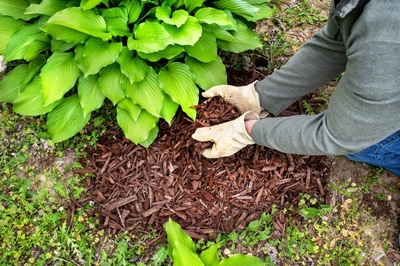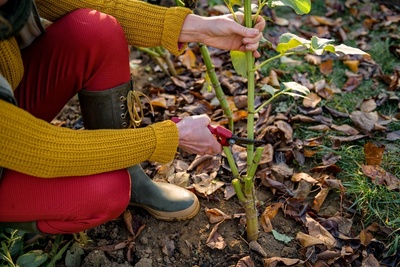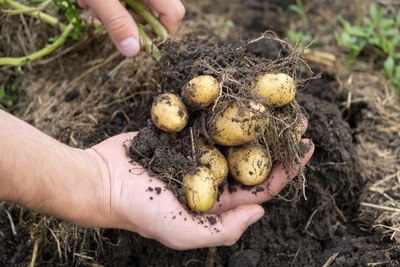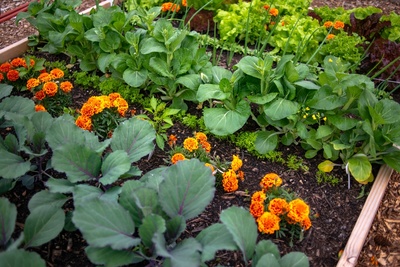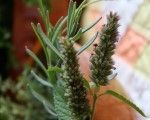
Herbs are so versatile, yet the very name means different things to different people. For me a herb is a plant that gives big rewards for a small amount of work. An aromatic, culinary plant, that’s used to enhance a recipe whilst its medicinal quality ensures and promotes good health.
“The best 6 doctors anywhere, And no one can deny it,
Are sunshine, water, rest, and air and exercise and diet.
These 6 will gladly you attend, If only you are willing,
our ills they’ll mend, Your cares they’ll tend,
And charge you not a shilling”
Jethro Kloss Herbalist

Growing a handful of culinary herbs can add a dash of sparkle, and will help enhance a delicious meal - you’ll agree if you'd ever tasted my cooking! Fortunately herbs are the perfect plant for novice gardeners because these plants are not fussy. They are simple to grow, and will fit into whatever space you can provide, whether it’s a crack in your paving, a window box, or an old terracotta pot from yesteryear. Trust me, even the most inexperienced, space-strapped gardener will have success with herbs, and is sure to adore their scent and flavour.
One of the first plants I ever grew was an herb, Bay Laurel Laurus nobilis to be exact, so the herbs I’m about to share are those chosen from personal experience. This very tough perennial herb that thinks it’s a spice is perfect for dishes that require long, slow cooking, such as soups, stews, casseroles and roasts (my kind of cooking). But why grow this plant when it’s leaves are available dried I hear you ask? Our Bay Laurel is quite at home in our well-drained soil and supplies us with all the bay leaves we need. I particularly like using bay in cooking but according to
Delia (the queen of cooking), ‘fresh bay leaves, can impart a slightly bitter flavour, so this is a herb which is far better used dried’. And drying them is easy, just hang a stem or two upside down and the leaves will dry in a couple of weeks. Bay is possibly used probably more than any other herb, as it flavours stocks, sauces, casseroles and marinades and really if you were only to grow one herb, it should be bay!

With so many herbs to choose from where do you start? Textbooks suggest that the most important thing to consider when planning a herb garden is location and ideally the containers or beds need to be as close as possible to your kitchen! For me a more invaluable question is ‘what are your favourite herbs’ or perhaps ‘how do you plan on using them and when’? Your answer will influence where your new herbs are to be placed, and who knows you might just get an herb or two up near your back door even if it is East facing! Access is imperative so ensure you grow your favourite herbs beside a path, or patio, if you have one that is. Otherwise place a few paving slabs amongst your kitchen herbs, so you can access them quickly, even if it’s raining.
Contrary to popular opinion not all herbs need a sunny site. Parsley Petroselinum crispumthrives in moist semi-shade. The secret to growing this biennial successfully is to cut it back even if you’re not using it for cooking. That way, it is less likely to ‘bolt’ sooner than it should and trust me it will, sometimes rather quickly depending on weather. Others that produce lush green leaves like Chervil Anthriscus cerefolium (treat like Parsley) and Onion Chives Allium schoenoprasum do well in partial shade too. Ensure you deadhead chives after the flower fades or they will go to seed and reproduce very vigorously, which isn’t necessarily a bad thing, as gardeners love to share our plants’ progeny. They are hardy perennials, but may die back in Winter depending on where your garden is located. Word of caution though, if you were to grow these three herbs in full sun, their leaves tend to scorch and become tougher.

Herbs tend to fall into two camps, moisture seekers like those above, and sun lovers. A hot, dry site, with plenty of limestone chippings to accentuate the drainage, and low nutrient levels are ideal for sun-loving species like Common Thyme Thymus vulgaris, Bay Laurel Laurus nobilis and Rosemary Rosmarinus officinalis. These herbs will excel in such conditions and produce greater quantities of essential oils in response to prolonged drought. On closer inspection you will discover that generally these plants have small or narrow, tough leaves and are rarely affected by pests or diseases.
Herbs for some denote Summer and now it is finally here!
Invariably once salad and barbecue season hit Ireland, I’m quizzed about herbs of all sorts, but especially one my all time favourites Basil Ocimum basilicum. The conversation goes something like this...“...I pot it on, I water it, it wilts, it dries out, leaves are yellow and appear infected, I change it's position, I keep it outdoors....” and so on. Does this sound at all familiar?

Basil is usually grown as a half hardy annual for its leaves. It is a hungry and thirsty feeder and I’d suggest planting up individual plants into plastic or terracotta pots using fertile, well drained soil. Aesthetically terracotta look the part but let’s face it they’re heavy, breakable and promote water loss. Plastic pots are preferred by many since they retain moisture and heat and are lightweight. Whatever type of container you choose, be sure it has plenty of drainage holes. Ensure to water from the bottom and not the top and don’t allow the leaves to get wet. Allow adequate space around each plant with sufficient air circulation to prevent botrytis [a fungal disease also called grey mould]. Feed regularly as any nutrients in the container will soon run out. Keep outside all day (if sunny) and bring indoors every evening. Unfortunately we don't have the temperatures at night to sustain a happy healthy basil (of course that assumes you don’t have access to a glasshouse).

As leaf growth is softer than other sun loving species, Basil tends to get attacked occasionally. Aphids are the main problem, but controlling them is easy if caught early. Use 1 part washing up liquid to 4 parts water and mix the solution together in a spray bottle. Spray the entire plant with the solution and in a few days they will all be gone. Aphids can't stand soap. I have been using this mix for years and it works every time. Alternatively you could take Klaus Laitenbergers approach and spray with garlic/nettle tonic every week. This recipe can be found in his wonderful book
Vegetables and Herbs for the Greenhouse and Polytunnel (pg 240). Lemon and garlic works a treat I hear, but I’ve yet to give this one a try. Of course Basil can be used for a variety of purposes. Add to oils, make homemade pesto, or just eat fresh with homegrown tomatoes, a pinch of black pepper and a good drizzle of extra virgin olive oil. Let’s face it Summer simply wouldn’t be the same without it!
Until next time, Ena
Text by Ena Ronayne ©
Photos courtesy of
Karen Larko
About Ena Ronayne: Based in South Co Dublin Ena Ronayne, horticulturist / teacher is an avid promoter of all things horticultural in Ireland and beyond. She can help you design, build, plant or maintain any growing space whether for vegetables or ornamentals. For more information email
enaronayne@gmail.com or telephone
+353868259166

 Growing a handful of culinary herbs can add a dash of sparkle, and will help enhance a delicious meal - you’ll agree if you'd ever tasted my cooking! Fortunately herbs are the perfect plant for novice gardeners because these plants are not fussy. They are simple to grow, and will fit into whatever space you can provide, whether it’s a crack in your paving, a window box, or an old terracotta pot from yesteryear. Trust me, even the most inexperienced, space-strapped gardener will have success with herbs, and is sure to adore their scent and flavour.
One of the first plants I ever grew was an herb, Bay Laurel Laurus nobilis to be exact, so the herbs I’m about to share are those chosen from personal experience. This very tough perennial herb that thinks it’s a spice is perfect for dishes that require long, slow cooking, such as soups, stews, casseroles and roasts (my kind of cooking). But why grow this plant when it’s leaves are available dried I hear you ask? Our Bay Laurel is quite at home in our well-drained soil and supplies us with all the bay leaves we need. I particularly like using bay in cooking but according to Delia (the queen of cooking), ‘fresh bay leaves, can impart a slightly bitter flavour, so this is a herb which is far better used dried’. And drying them is easy, just hang a stem or two upside down and the leaves will dry in a couple of weeks. Bay is possibly used probably more than any other herb, as it flavours stocks, sauces, casseroles and marinades and really if you were only to grow one herb, it should be bay!
Growing a handful of culinary herbs can add a dash of sparkle, and will help enhance a delicious meal - you’ll agree if you'd ever tasted my cooking! Fortunately herbs are the perfect plant for novice gardeners because these plants are not fussy. They are simple to grow, and will fit into whatever space you can provide, whether it’s a crack in your paving, a window box, or an old terracotta pot from yesteryear. Trust me, even the most inexperienced, space-strapped gardener will have success with herbs, and is sure to adore their scent and flavour.
One of the first plants I ever grew was an herb, Bay Laurel Laurus nobilis to be exact, so the herbs I’m about to share are those chosen from personal experience. This very tough perennial herb that thinks it’s a spice is perfect for dishes that require long, slow cooking, such as soups, stews, casseroles and roasts (my kind of cooking). But why grow this plant when it’s leaves are available dried I hear you ask? Our Bay Laurel is quite at home in our well-drained soil and supplies us with all the bay leaves we need. I particularly like using bay in cooking but according to Delia (the queen of cooking), ‘fresh bay leaves, can impart a slightly bitter flavour, so this is a herb which is far better used dried’. And drying them is easy, just hang a stem or two upside down and the leaves will dry in a couple of weeks. Bay is possibly used probably more than any other herb, as it flavours stocks, sauces, casseroles and marinades and really if you were only to grow one herb, it should be bay!
 With so many herbs to choose from where do you start? Textbooks suggest that the most important thing to consider when planning a herb garden is location and ideally the containers or beds need to be as close as possible to your kitchen! For me a more invaluable question is ‘what are your favourite herbs’ or perhaps ‘how do you plan on using them and when’? Your answer will influence where your new herbs are to be placed, and who knows you might just get an herb or two up near your back door even if it is East facing! Access is imperative so ensure you grow your favourite herbs beside a path, or patio, if you have one that is. Otherwise place a few paving slabs amongst your kitchen herbs, so you can access them quickly, even if it’s raining.
Contrary to popular opinion not all herbs need a sunny site. Parsley Petroselinum crispumthrives in moist semi-shade. The secret to growing this biennial successfully is to cut it back even if you’re not using it for cooking. That way, it is less likely to ‘bolt’ sooner than it should and trust me it will, sometimes rather quickly depending on weather. Others that produce lush green leaves like Chervil Anthriscus cerefolium (treat like Parsley) and Onion Chives Allium schoenoprasum do well in partial shade too. Ensure you deadhead chives after the flower fades or they will go to seed and reproduce very vigorously, which isn’t necessarily a bad thing, as gardeners love to share our plants’ progeny. They are hardy perennials, but may die back in Winter depending on where your garden is located. Word of caution though, if you were to grow these three herbs in full sun, their leaves tend to scorch and become tougher.
With so many herbs to choose from where do you start? Textbooks suggest that the most important thing to consider when planning a herb garden is location and ideally the containers or beds need to be as close as possible to your kitchen! For me a more invaluable question is ‘what are your favourite herbs’ or perhaps ‘how do you plan on using them and when’? Your answer will influence where your new herbs are to be placed, and who knows you might just get an herb or two up near your back door even if it is East facing! Access is imperative so ensure you grow your favourite herbs beside a path, or patio, if you have one that is. Otherwise place a few paving slabs amongst your kitchen herbs, so you can access them quickly, even if it’s raining.
Contrary to popular opinion not all herbs need a sunny site. Parsley Petroselinum crispumthrives in moist semi-shade. The secret to growing this biennial successfully is to cut it back even if you’re not using it for cooking. That way, it is less likely to ‘bolt’ sooner than it should and trust me it will, sometimes rather quickly depending on weather. Others that produce lush green leaves like Chervil Anthriscus cerefolium (treat like Parsley) and Onion Chives Allium schoenoprasum do well in partial shade too. Ensure you deadhead chives after the flower fades or they will go to seed and reproduce very vigorously, which isn’t necessarily a bad thing, as gardeners love to share our plants’ progeny. They are hardy perennials, but may die back in Winter depending on where your garden is located. Word of caution though, if you were to grow these three herbs in full sun, their leaves tend to scorch and become tougher.
 Herbs tend to fall into two camps, moisture seekers like those above, and sun lovers. A hot, dry site, with plenty of limestone chippings to accentuate the drainage, and low nutrient levels are ideal for sun-loving species like Common Thyme Thymus vulgaris, Bay Laurel Laurus nobilis and Rosemary Rosmarinus officinalis. These herbs will excel in such conditions and produce greater quantities of essential oils in response to prolonged drought. On closer inspection you will discover that generally these plants have small or narrow, tough leaves and are rarely affected by pests or diseases.
Herbs for some denote Summer and now it is finally here!
Invariably once salad and barbecue season hit Ireland, I’m quizzed about herbs of all sorts, but especially one my all time favourites Basil Ocimum basilicum. The conversation goes something like this...“...I pot it on, I water it, it wilts, it dries out, leaves are yellow and appear infected, I change it's position, I keep it outdoors....” and so on. Does this sound at all familiar?
Herbs tend to fall into two camps, moisture seekers like those above, and sun lovers. A hot, dry site, with plenty of limestone chippings to accentuate the drainage, and low nutrient levels are ideal for sun-loving species like Common Thyme Thymus vulgaris, Bay Laurel Laurus nobilis and Rosemary Rosmarinus officinalis. These herbs will excel in such conditions and produce greater quantities of essential oils in response to prolonged drought. On closer inspection you will discover that generally these plants have small or narrow, tough leaves and are rarely affected by pests or diseases.
Herbs for some denote Summer and now it is finally here!
Invariably once salad and barbecue season hit Ireland, I’m quizzed about herbs of all sorts, but especially one my all time favourites Basil Ocimum basilicum. The conversation goes something like this...“...I pot it on, I water it, it wilts, it dries out, leaves are yellow and appear infected, I change it's position, I keep it outdoors....” and so on. Does this sound at all familiar?
 Basil is usually grown as a half hardy annual for its leaves. It is a hungry and thirsty feeder and I’d suggest planting up individual plants into plastic or terracotta pots using fertile, well drained soil. Aesthetically terracotta look the part but let’s face it they’re heavy, breakable and promote water loss. Plastic pots are preferred by many since they retain moisture and heat and are lightweight. Whatever type of container you choose, be sure it has plenty of drainage holes. Ensure to water from the bottom and not the top and don’t allow the leaves to get wet. Allow adequate space around each plant with sufficient air circulation to prevent botrytis [a fungal disease also called grey mould]. Feed regularly as any nutrients in the container will soon run out. Keep outside all day (if sunny) and bring indoors every evening. Unfortunately we don't have the temperatures at night to sustain a happy healthy basil (of course that assumes you don’t have access to a glasshouse).
Basil is usually grown as a half hardy annual for its leaves. It is a hungry and thirsty feeder and I’d suggest planting up individual plants into plastic or terracotta pots using fertile, well drained soil. Aesthetically terracotta look the part but let’s face it they’re heavy, breakable and promote water loss. Plastic pots are preferred by many since they retain moisture and heat and are lightweight. Whatever type of container you choose, be sure it has plenty of drainage holes. Ensure to water from the bottom and not the top and don’t allow the leaves to get wet. Allow adequate space around each plant with sufficient air circulation to prevent botrytis [a fungal disease also called grey mould]. Feed regularly as any nutrients in the container will soon run out. Keep outside all day (if sunny) and bring indoors every evening. Unfortunately we don't have the temperatures at night to sustain a happy healthy basil (of course that assumes you don’t have access to a glasshouse).
 As leaf growth is softer than other sun loving species, Basil tends to get attacked occasionally. Aphids are the main problem, but controlling them is easy if caught early. Use 1 part washing up liquid to 4 parts water and mix the solution together in a spray bottle. Spray the entire plant with the solution and in a few days they will all be gone. Aphids can't stand soap. I have been using this mix for years and it works every time. Alternatively you could take Klaus Laitenbergers approach and spray with garlic/nettle tonic every week. This recipe can be found in his wonderful book Vegetables and Herbs for the Greenhouse and Polytunnel (pg 240). Lemon and garlic works a treat I hear, but I’ve yet to give this one a try. Of course Basil can be used for a variety of purposes. Add to oils, make homemade pesto, or just eat fresh with homegrown tomatoes, a pinch of black pepper and a good drizzle of extra virgin olive oil. Let’s face it Summer simply wouldn’t be the same without it!
Until next time, Ena
Text by Ena Ronayne ©
Photos courtesy of Karen Larko
About Ena Ronayne: Based in South Co Dublin Ena Ronayne, horticulturist / teacher is an avid promoter of all things horticultural in Ireland and beyond. She can help you design, build, plant or maintain any growing space whether for vegetables or ornamentals. For more information email enaronayne@gmail.com or telephone +353868259166
As leaf growth is softer than other sun loving species, Basil tends to get attacked occasionally. Aphids are the main problem, but controlling them is easy if caught early. Use 1 part washing up liquid to 4 parts water and mix the solution together in a spray bottle. Spray the entire plant with the solution and in a few days they will all be gone. Aphids can't stand soap. I have been using this mix for years and it works every time. Alternatively you could take Klaus Laitenbergers approach and spray with garlic/nettle tonic every week. This recipe can be found in his wonderful book Vegetables and Herbs for the Greenhouse and Polytunnel (pg 240). Lemon and garlic works a treat I hear, but I’ve yet to give this one a try. Of course Basil can be used for a variety of purposes. Add to oils, make homemade pesto, or just eat fresh with homegrown tomatoes, a pinch of black pepper and a good drizzle of extra virgin olive oil. Let’s face it Summer simply wouldn’t be the same without it!
Until next time, Ena
Text by Ena Ronayne ©
Photos courtesy of Karen Larko
About Ena Ronayne: Based in South Co Dublin Ena Ronayne, horticulturist / teacher is an avid promoter of all things horticultural in Ireland and beyond. She can help you design, build, plant or maintain any growing space whether for vegetables or ornamentals. For more information email enaronayne@gmail.com or telephone +353868259166 